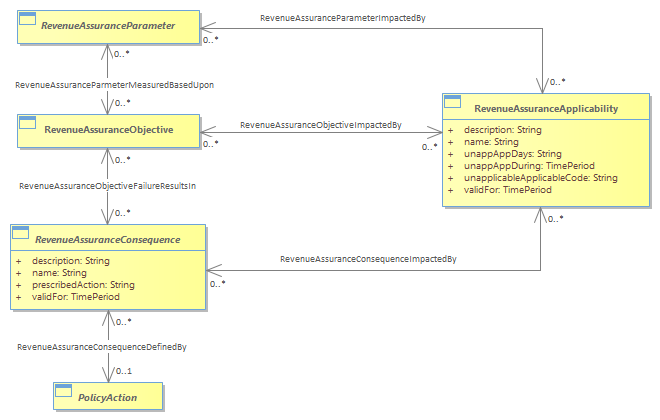Figure RA.07 - RA Consequence

|
Project:
|

Figure RA.07 - RA Consequence : Class diagram
In the complex rule example, where a bill was generated for higher or lower bandwidth than provided, there would be a complex condition composed as “IF BilledBandwidth #gt; ProvidedBandwidth” “OR” “IF BilledBandwidth#lt; ProvidedBandwidth”. These three attributes would be derived using a derivation algorithm defined in an existing subclass (ProdOfferPricePolicyVariable) of PolicyVariable. The action would be composed as “SET BandwidthBilledError to true”.<br/>See GB922 Common Domain section Policy ABE for detail.<br/>If the RevenueAssurranceObjective is not met then a consequence results as shown in figure RA.07. The RevenueAssuranceConsequence is characterized by a prescribedAction attribute. This simple attribute may not be sufficient to specify the consequence. If so, then the association to PolicyAction allows for a more complex action to be specified. For example, …Note that the prescribed action may also result in the creation of a RevenueAssuranceViolation or a RevenueAssuranceTroubleTicket as shown in Figure RA.08.<br/>Additionally, parameters, objectives and consequences may be applicable, or not, at certain times. For example, if objectives may be checked during the week, but not on the weekend; consequences may be less severe during the day than during the evening. These scenarios are handled by the RevenueAssuranceApplicability business entity, also shown in Figure RA.07.<br/><br/>
|

